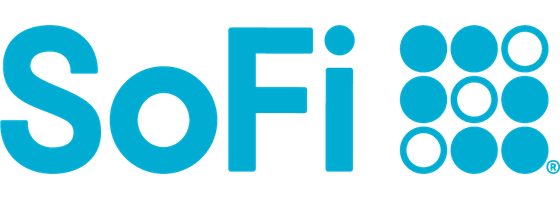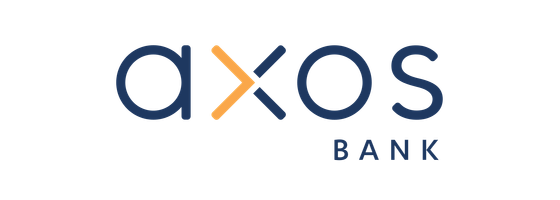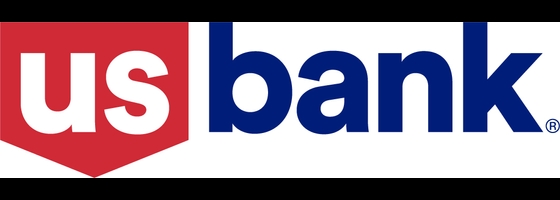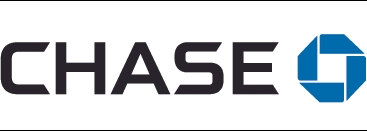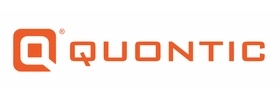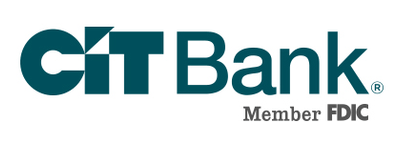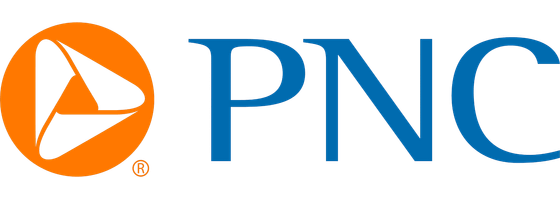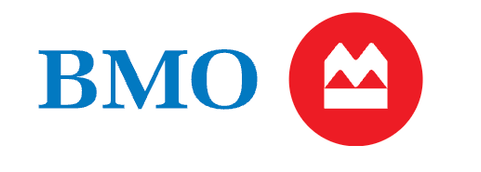- You can earn rewards on your checking and savings accounts.
- Up to 4.60% APY on savings and 0.50% APY on checking.
11 Best Checking Accounts in November 2024

Our evaluations and opinions are not influenced by our advertising relationships, but we may earn a commission from our partners’ links. This content is created by TIME Stamped, under TIME’s direction and produced in accordance with TIME’s editorial guidelines and overseen by TIME’s editorial staff. Learn more about it.
A checking account allows you to easily make deposits and withdrawals to pay for everyday expenses such as rent, mortgage, groceries, and bills. However, they are not all created equal. The best checking accounts offer special benefits such as high annual percentage yields (APYs), low or nonexistent monthly fees, and special offers for opening an account.
Learn more about the best checking accounts, how to choose the best checking account for your needs, and the general requirements banks will have for opening a checking account.
The SoFi Checking account can earn rewards that you can turn into cash back, statement credit, or an investment. This perk is an unusual feature for a checking account, which makes it stand out.
When you open a SoFi Checking account, you’ll be eligible for a bonus of up to $300, depending on your deposit amount. Then you’ll benefit from SoFi Member Rewards, where you can earn points for getting paid, spending at certain retailers, monitoring your credit, and more. SoFi Member Rewards points can be redeemed for cash, shares in an investment account, or a statement credit on a SoFi credit card. You can manage and redeem your points from the SoFi app. This program is designed to help SoFi members achieve financial independence.
You can Build your own APY with up to 3.30% APY* on an Axos Rewards Checking account—about 47 times the national average checking account APY. If you qualify, making this choice is a no-brainer.
If you have monthly direct deposits of at least $1,500, you can start earning interest (0.40%) on your Axos Rewards Checking account. Meeting some additional requirements listed below can increase your APY, eventually reaching a maximum of 3.30% on up to $50,000:
If you meet all four requirements, you earn the maximum APY of 3.30%.
Axos is currently running a limited time offer, where new accounts can earn up to a $500 welcome bonus with promo code RC500 (up to and including July 31, 2024).
The HSBC Premier Checking account has a lot of perks for those who meet the eligibility criteria and frequently travel to overseas locations. And how many accounts offer banking privileges that extend to family members?
The HSBC Premier Checking account is designed for those who frequently travel to different countries and need a bank account to support them.
To qualify for an HSBC Premier Checking account, you must meet at least one of the following criteria:
These requirements make this account out of reach for many consumers. However, those who qualify for a Premier account will enjoy numerous perks. The Premier account allows the holder to share their Premier status with up to four family members, get support for opening an overseas account, and avoid paying foreign transaction fees.
Finally, HSBC Premier Checking currently has an incredible sign-on bonus of up to $2,500. If you can deposit or invest at least $75,000, you will be eligible for a free cash bonus; the more you deposit, the higher the bonus.
The U.S. Bank Smartly Checking account has a lot to offer, including a helpful AI assistant that can help you with basic banking tasks quickly and efficiently. You get to talk your commands instead of typing them.
The U.S. Bank Sma rtly Checking account from U.S. Bank has a handy Smart Assistant that can assist you with several tasks via the app. To use this feature, open the app and tap the microphone to talk. You can give commands such as “transfer money from my savings account” or “pay my credit card bill,” and Smart Assistant will help you complete the task quickly and efficiently. This feature brings even more convenience to mobile banking.
As a U.S. Bank Smartly Checking customer, you’ll be charged a monthly maintenance fee of $6.95. However, if you meet one of the following requirements, the fee will be reduced to $0.
One of the main perks of a U.S. Bank Smartly Checking account is that you can opt into Smart Rewards. This program allows you to earn interest on your checking account balance and avoid overdraft fees and ATM transaction fees. If you link your U.S. Bank Smartly Checking account to a U.S. Bank credit card, you can also get cash back on certain brands and categories when using your debit card.
Using the U.S. Bank mobile app, you can set up spending categories to track your budget and set up alerts to notify you when you’re reaching the spending cap in a specific category. The app also features a goal planner; you can set up a “goal” such as making a down payment on a house or taking your dream vacation, and the app will estimate how much you’ll need to save. Other benefits include mobile check deposits, automated bill pay, Zelle instant transfers, and contactless payments.
The Chase mobile app is convenience personified. Nowhere makes it easier to make and receive payments than Chase’s Total Checking account.
The Chase mobile app offers three ways for you to get paid or make payments. You can send and receive money instantly and with zero fees in the app via Zelle. Chase QuickDeposit allows you to deposit checks easily from the app, avoiding a trip to a Chase branch to cash a check. And you can set up the My Chase Plan from the app, which helps break up card purchases into smaller payments that fit your budget. You can also set up automatic savings, make a budget and track your spending, and monitor your credit health—all directly from the Chase app.
Chase Total Checking charges a $12 ($0 with qualifying activities); $34 NSF Fee monthly service fee, but you can waive it each month that you meet any of the following criteria:
New accounts will receive $300*.
The Current Spend account is ideal for parents who want to link a card for their teenager to keep track of their spending and encourage responsible financial behavior.
When you open a Current Spend account, you’ll have the option to link a teen debt card to your main checking account for no additional charge. This makes it easier to keep the family’s banking under one umbrella while monitoring your teen’s spending (and giving them more financial freedom at the same time.
In addition, you can access more than 40,000 fee-free ATMs though the Allpoint network, and Current Spend doesn’t charge fees for bank transfers or minimum balances. You can also access spending insights through your Current Spend account, which helps you manage your budget and recognize where you can cut back to save money. Finally, with a Current Spend account you have the option to add up to three Savings Pods, which can earn up to 4.00% APY with qualifying direct deposits of $200 or more.
With an APY of 1.10%, the Quontic High Interest Checking account helps you earn extra interest on your money by making transactions. To get the high APY, you’ll need to make at least 10 qualifying transactions on your debit card per statement cycle, and each transaction must be at least $10. However, this likely won’t be a problem if you use Quontic as your main checking account.
In addition to the high APY, a Quontic High Interest Checking account has $0 monthly fee or minimum balance requirement to earn cash back. However, you will need at least $100 to open an account. Quontic also offers an unusual feature—Quontic Ring Pay—which allows you to make transactions with a wearable ring rather than carrying your debit card. You’ll get the pay ring for free upon opening an account.
The CIT Bank eChecking account stands out for not charging fees for maintenance, ATM withdrawals, check mailing, or online transfers. That’s a real bonus.
Although many checking accounts have a $0 monthly maintenance fee, the CIT Bank eChecking account goes a step further. First, CIT Bank does not charge ATM fees and offers up to $30 per month for reimbursements for other banks’ ATM fees. CIT Bank also doesn’t charge fees for overdrawing your account, check mailing, online transfers, or incoming wire transfers. There may be a fee for overnight delivery of a replacement card if yours is lost or stolen or for initiating a wire transaction of less than $25,000, but these fees will likely be rare.
Capital One makes depositing cash easy through your local CVS location, and it also offers three overdraft-protection options.
One of the drawbacks of online banking can be the inability to deposit cash at a local brick-and-mortar location. With the Capital One 360 Checking account, you can deposit cash to your account at any CVS location using the on-site ATMs. In 2021 CVS had almost 10,000 locations, so this could be a huge benefit.
Capital One also offers several overdraft protection options, early paycheck access, Zelle transfers, and several physical branches and “cafes,” where you can get a snack and a drink, enjoy free Wi-Fi, and chat with Capital One ambassadors.
Perks are nice, but sometimes you just need a basic checking account, and the Citi Regular Checking account is the best no-frills choice for banking.
Sometimes you just want to settle for something simple. When it comes to checking accounts, that’s Citi Basic Banking. This checking account offers unlimited check writing, fee-free ATM withdrawals, and easy money movement—and that’s it.
A Citi Basic Banking account does have a $15 monthly maintenance fee, but it’s waivable as long as you make one direct deposit and one bill payment per month while maintaining a combined balance of at least $1,500 in your checking and other eligible linked accounts (including checking, savings, and money market accounts).
PNC Virtual Wallet is a unique type of account that can help you better manage your finances by combining two checking accounts and one savings account in one.
PNC Virtual Wallet is a unique type of checking account that combines checking and savings accounts for easier money management. There are three options:
Each option has a Spend account that acts as the primary checking account, a Reserve account that acts as a secondary checking account, and a Growth account that acts as a long-term savings account. Each option has a monthly maintenance fee, ranging from $7 to $25, though it’s also possible to waive this fee by meeting certain criteria.
One of the most unique features of the PNC Virtual Wallet accounts is something called Low Cash Mode, which has several helpful features:
If convenience is a top must-have for your checking account, PNC Virtual Wallet may be your perfect match.
The BMO Smart Money account is a top pick for young adults since the $5 ($0 if you’re under 25) monthly maintenance fee is waived for customers under 25. You can also enjoy unlimited withdrawals from more than 40,000 ATMs nationwide with no transaction fees. There are no overdraft fees, either—an additional bonus for those just starting their careers who may find an unexpected charge on their account before their paycheck clears.
Despite having few fees, the BMO Smart Money account has a couple to note. If you opt for paper statements, there’s a $2 monthly charge (though you can avoid this by receiving e-statements instead). There’s also a $3 charge for check images if you’re signed up for paper statements; that charge is dropped if you receive paperless statements. Finally, a minimum of $25 is needed to open an account.
But when it comes to customer service options, BMO has much to offer. You can get support from a real person through online chat or over the phone, or you can get in-person assistance at a local BMO branch if you have one nearby.
| Account | APY* | Monthly fee | Special offer |
|---|---|---|---|
Sofi Online Checking Account | 0.50% (though 4.20% can be earned on savings account balances) | $0 | Up to $300 bonus with qualifying direct deposits available through 12/31/24 |
Axos Rewards Checking | Up to 3.30% | $0 | No promotions at this time. |
HSBC Premier Checking | N/A | $50 (waived in several ways) | $1,500 or $2,500 (offer expires Jan. 2, 2025) |
U.S. Bank Smartly® Checking | N/A | $6.95 (waived in several ways) | N/A |
Chase Total Checking® | N/A | $12 ($0 with qualifying activities); $34 NSF Fee | $300* |
Current Spend | Earn up to 4.00% with Savings Pods | $0 | N/A |
Quontic High Interest Checking | 1.10% | $0 | Free pay ring (otherwise $29) upon account opening |
CIT eChecking | 0.25% with a balance of $25,000 or more; 0.10% with a balance of under $25,000 | $0 | N/A |
Capital One 360 Checking Account | 0.10% | $0 | N/A |
Citi Basic Checking | N/A | $15 (waived with enhanced direct deposits of $250 per month) | N/A |
PNC Virtual Wallet | Up to 0.05% | $7 to $25 (waived in several ways) | Up to $400 |
BMO Smart Money | N/A | $5 ($0 if you’re under 25) | N/A |
To determine the best checking accounts, we considered several factors. We compared monthly maintenance fees across a number of highly rated checking accounts, giving preference to those with either a $0 fee or a small but waivable one. We also considered the APY for each checking account we researched, looking for those that could help customers earn more interest on their money. We compared apps, looked for attractive features, and considered special offers for opening an account.
There are several different types of checking accounts to be aware of while you’re searching for the best one for your needs, including the following:
Selecting a checking account can seem overwhelming with so many options from which to choose, and the best checking account for one person likely won’t meet the needs of someone else. The following can help you determine the best checking account for you:
To open a checking account, you’ll need to bring a government-issued ID, such as a driver’s license, and provide some basic personal information, including your Social Security number or Taxpayer Identification Number (TIN), birthdate, address, and phone number. Many checking accounts require a minimum deposit amount to open them,so make sure you know the specifications and bring cash or a check. If you’re under age 18, you’ll need a co-owner (typically a parent or guardian) to sign the paperwork on your behalf.
There are many options when it comes to checking accounts, but what if you prefer to be “unbanked”? There are several alternative options to consider if you don’t want to manage your money using a checking account.
Although there are several alternatives, it’s usually safer and more convenient to keep your money in a checking account, particularly if you use one that has a high APY or offers rewards.
This depends on what you're seeking. If you want an account with a high APY, Quontic may be the best option. If you want a good rewards program, SoFI could be the way to go.
That would be the monthly maintenance or service fee. However, many checking accounts today waive the fee if you can meet certain conditions, such as carrying a minimum balance or making a certain number of transactions, and some don’t have the fee at all.
There are three ways to avoid the monthly fee on a Chase checking account.
RELATED: Best Online Brokers
It will depend on your bank. Many banks have overdraft protection for their checking accounts, but the amount they’ll allow you to overdraw will depend; some may have a $100 cap, while others may go up to $250 or more if you meet certain eligibility requirements.
This depends on what you want. Online checking accounts have many benefits, including high APYs and the ability to bank from anywhere. Still, some customers prefer being able to go to a physical bank location and speak to a representative in person.
You use a checking account to manage your everyday finances, such as receiving paychecks, paying bills, and purchasing groceries and gas. You can pay with your debit card or a check, and you can withdraw cash from an ATM.
Savings accounts are designed to help you put money away for a rainy day. They’re limited to six withdrawals per month or statement cycle, and some accrue high interest to allow you to grow your money slowly in a low-risk way.
*APY is subject to change. APY is updated as of Nov. 1, 2024.
The information presented here is created by TIME Stamped and overseen by TIME editorial staff. To learn more, see our About Us page.
